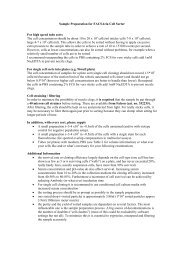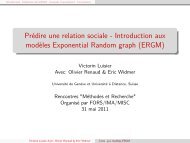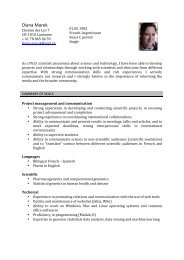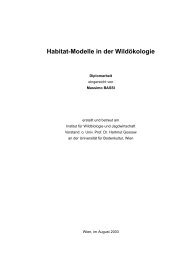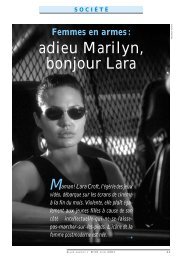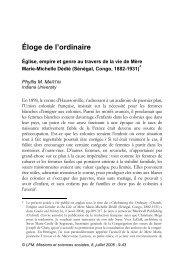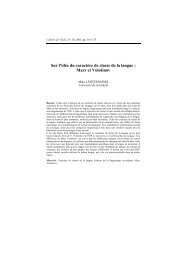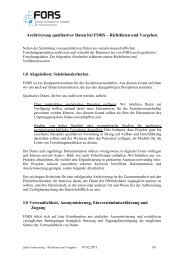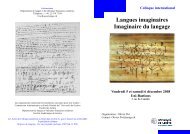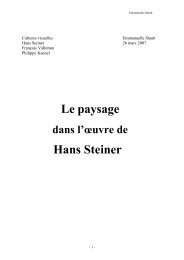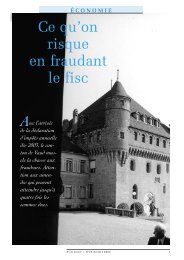conference programme book - European Survey Research ...
conference programme book - European Survey Research ...
conference programme book - European Survey Research ...
Create successful ePaper yourself
Turn your PDF publications into a flip-book with our unique Google optimized e-Paper software.
92 WEDNESDAY 20 JULYThis paper presents results from an experiment to increase the effecveness of between-sweep cohort maintenanceprocedures on the Millennium Cohort Study (MCS). The MCS is following over 19,000 children bornin the UK in 2000/1. So far there have been four waves of the study at 9 months, 3 years, 5 years and 7 years.The fih wave will take place in 2012 when the study children will be aged 11 and in their final year of primaryschool.2.27 Challenges and responses in cross-cultural and comparave quesonnairepretesngTo be held on July 20, 2011 from: 14:00 to 15:30, in room 340.Coordinated by:• Kristen Miller - Naonal Center for Health Stascs , United States• Jose Luis Padilla - University of Granada, Spain2.27.1 How to combine cognive interview and field test methodologies to validate evidence for surveyquesons?J. Padilla 2 , K. Miller 1 , M. Loeb 1 , A. Maitland 31 Naonal Center for Health Stascs , United States; 2 University of Granada, Spain; 3 Centers for Disease Controland Prevenon, United StatesAs the use of cognive interview (CI) methodology to improve survey quesons is increasing, survey researchersand praconers are faced with the challenge of how to combine qualitave CI evidence with quantavefield test results. Beyond the debate about the methodological status –qualitave vs. quantave-, mulplebenefits can be obtained by combining evidence from both methods in a queson evaluaon project. In crossculturaland mul-naonal surveys, a mixed-method approach can provide evidence of the prevalence of theinterpretaon paerns found by CI, and the extent to which differences in understanding the queson’s meaningcan be linked to different type of response biases or to real differences in the intended construct. The aimof this paper is to illustrate how to use a mixed-method approach that combines CI and field test methods...2.27.2 Cognive interviewing in web surveys: the use of probing quesons in cross-naonal web surveysD. Behr 1 , M. Braun 1 , L. Kaczmirek 1 , W. Bandilla 11 GESIS - Leibniz Instute for the Social Sciences, GermanyEquivalence is a necessary prerequisite of any substanve analysis of cross-cultural survey data. Cognive interviewingis a suitable method when it comes to idenfying non-equivalence in survey data and, parcularly,its causes. Usual face-to-face cognive interviews have their shortcomings, though, e.g. their use only as apretesng device, limited sample sizes, great me and cost investment, or interviewer effects due to differentinterviewer behavior. In cross-naonal research, these problems are exacerbated and, thus, it does not comeas a surprise that the use of cognive interviewing in the comparave context brings with it parcular challenges.We now propose to test web surveys as a means to conduct cross-cultural cognive interviewing. Websurveys permit to counter the above menoned shortcomings: they allow e.g...2.27.3 Evaluang the Evaluaon: What Constutes Sufficient Evidence of Findings in Cognive InterviewReports?S. Willson 11 Naonal Center for Health Stascs , United StatesFinal reports of cognive interview studies are oen wrien and available for review; however, wide varia-on exists in the organizaon, informaon included, and level of detail present in cognive interview reports.



